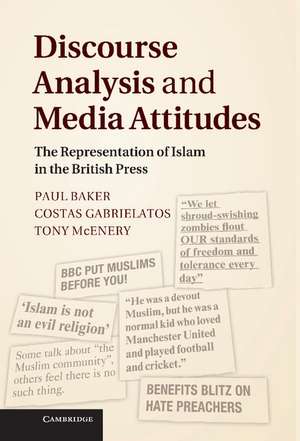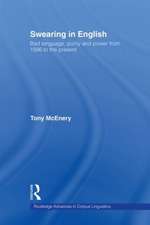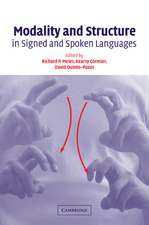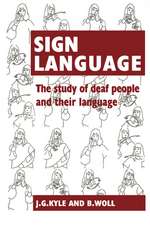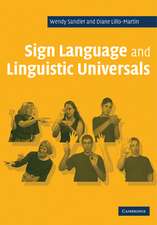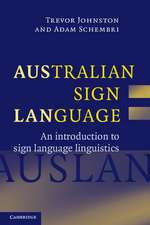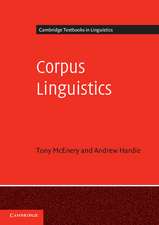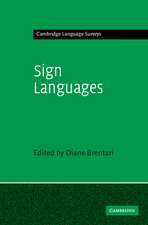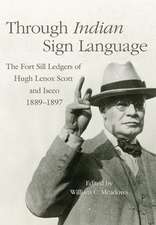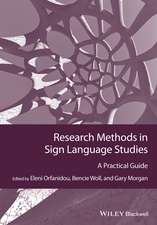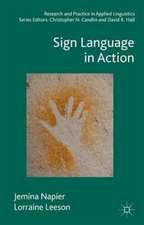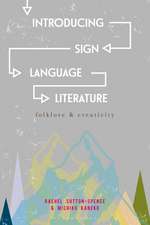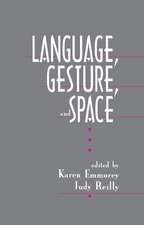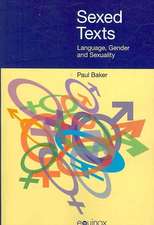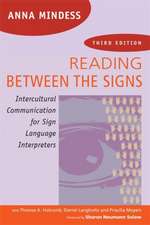Discourse Analysis and Media Attitudes: The Representation of Islam in the British Press
Autor Paul Baker, Costas Gabrielatos, Tony McEneryen Limba Engleză Hardback – 13 feb 2013
| Toate formatele și edițiile | Preț | Express |
|---|---|---|
| Paperback (1) | 285.37 lei 43-57 zile | |
| Cambridge University Press – 11 dec 2019 | 285.37 lei 43-57 zile | |
| Hardback (1) | 726.42 lei 43-57 zile | |
| Cambridge University Press – 13 feb 2013 | 726.42 lei 43-57 zile |
Preț: 726.42 lei
Preț vechi: 844.67 lei
-14% Nou
Puncte Express: 1090
Preț estimativ în valută:
139.01€ • 144.25$ • 116.19£
139.01€ • 144.25$ • 116.19£
Carte tipărită la comandă
Livrare economică 17-31 martie
Preluare comenzi: 021 569.72.76
Specificații
ISBN-13: 9781107008823
ISBN-10: 1107008824
Pagini: 294
Ilustrații: 40 b/w illus. 52 tables
Dimensiuni: 152 x 229 x 17 mm
Greutate: 0.57 kg
Ediția:New.
Editura: Cambridge University Press
Colecția Cambridge University Press
Locul publicării:New York, United States
ISBN-10: 1107008824
Pagini: 294
Ilustrații: 40 b/w illus. 52 tables
Dimensiuni: 152 x 229 x 17 mm
Greutate: 0.57 kg
Ediția:New.
Editura: Cambridge University Press
Colecția Cambridge University Press
Locul publicării:New York, United States
Cuprins
1. Introduction; 2. Sketching Muslims: the big picture; 3. Muslim or Moslem: differences between newspapers; 4. The 9/11 effect: change over time; 5. Welcome to Muslim world: collectivisation and differentiation; 6. What's a devout Muslim? Ways of believing; 7. From hate preachers to scroungers: who benefits?; 8. Burqas and brainwashing: Muslims and gender; 9. Does history rhyme? Earlier news representations of Muslims; 10. Conclusion.
Recenzii
'This book investigates the ways in which the lives and actions of Muslims and Islam are represented in the British press. The authors use the corpus method of analysing vast amounts of data to weigh the overall impact of the media coverage. This approach offers stimulating new insights which offer useful suggestions as to the ways in which the current situation might be improved.' Rt Hon Charles Clarke, Former UK Home Secretary
'This study is destined to become a classic. It provides detailed evidence of how press influence works, and elegantly demonstrates the strength of corpus linguistics as a research tool.' Susan Hunston, University of Birmingham
'Understanding the representation of Islam in the Western media is a major challenge that demands a balanced approach supported by real data. The methods that enhance this book throughout are rich in insight, comprehensive in vision and evidential at their core. Integrating large corpus-linguistic-informed databases with the qualitative accents of critical discourse analysis the book underlines the centrality of language use to the way we read media discourses and results in humanities scholarship at its very best.' Ronald Carter, University of Nottingham
'This excellent and very accessible book not only provides key insights into a topic of major social and political importance, it also clearly demonstrates the power of corpus linguistics to provide hard factual evidence for critical discourse analysis. This is a major contribution, not only to understanding of Islamophobia in the UK press, but also to the social sciences and discourse analysis as a whole.' Guy Cook, King's College London
'[This book] uses corpus linguistic analysis to show how selective linguistic patterning in newspapers creates an overwhelmingly negative point of view in contemporary press coverage of Islam. Research approach and method are precisely defined, analytic techniques clearly explained and illustrated, and inferences from data weighed up in meticulous and even-handed exposition. The book demonstrates in exemplary fashion how linguistics can contribute to wider social debates; it will be of value not only to scholars and students in corpus linguistics and discourse analysis but also in other fields concerned with public representations of Islam or with problems of media responsibility.' Alan Durant, Middlesex University
'What sets this discourse analysis apart from its predecessors is its completeness: the authors' sample is not a selection of newspapers, accommodating the political stance of the outlet (left-leaning, right-leaning), the format (tabloid, broadsheet), or a narrow period; neither, having aggregated all the articles that mention the topic, do they thin the sample by random or purposive selection. Their corpus includes all the major daily newspapers and all the articles published therein that refer to Islam and Muslims between 1998 and 2009. Although the authors allow that some articles may have slipped through their net, the corpus they compiled contains 200,037 articles.' Michael B. Munnik, Journalism and Mass Communication Quarterly
'This study is destined to become a classic. It provides detailed evidence of how press influence works, and elegantly demonstrates the strength of corpus linguistics as a research tool.' Susan Hunston, University of Birmingham
'Understanding the representation of Islam in the Western media is a major challenge that demands a balanced approach supported by real data. The methods that enhance this book throughout are rich in insight, comprehensive in vision and evidential at their core. Integrating large corpus-linguistic-informed databases with the qualitative accents of critical discourse analysis the book underlines the centrality of language use to the way we read media discourses and results in humanities scholarship at its very best.' Ronald Carter, University of Nottingham
'This excellent and very accessible book not only provides key insights into a topic of major social and political importance, it also clearly demonstrates the power of corpus linguistics to provide hard factual evidence for critical discourse analysis. This is a major contribution, not only to understanding of Islamophobia in the UK press, but also to the social sciences and discourse analysis as a whole.' Guy Cook, King's College London
'[This book] uses corpus linguistic analysis to show how selective linguistic patterning in newspapers creates an overwhelmingly negative point of view in contemporary press coverage of Islam. Research approach and method are precisely defined, analytic techniques clearly explained and illustrated, and inferences from data weighed up in meticulous and even-handed exposition. The book demonstrates in exemplary fashion how linguistics can contribute to wider social debates; it will be of value not only to scholars and students in corpus linguistics and discourse analysis but also in other fields concerned with public representations of Islam or with problems of media responsibility.' Alan Durant, Middlesex University
'What sets this discourse analysis apart from its predecessors is its completeness: the authors' sample is not a selection of newspapers, accommodating the political stance of the outlet (left-leaning, right-leaning), the format (tabloid, broadsheet), or a narrow period; neither, having aggregated all the articles that mention the topic, do they thin the sample by random or purposive selection. Their corpus includes all the major daily newspapers and all the articles published therein that refer to Islam and Muslims between 1998 and 2009. Although the authors allow that some articles may have slipped through their net, the corpus they compiled contains 200,037 articles.' Michael B. Munnik, Journalism and Mass Communication Quarterly
Notă biografică
Descriere
Is the British press prejudiced against Muslims? This thorough analysis of over 140 million words of newspaper articles explores that question.
